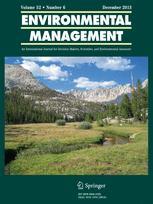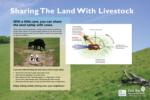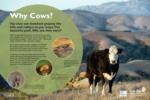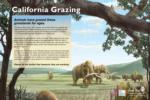Recreation & Grazing
Fact Sheet: Sharing Open Space: What to Expect from Grazing Livestock
Compatibility of Livestock Grazing and Recreational Use on Coastal California Public Lands: Importance, Interactions, and Management Solutions
While the primary use of rangelands for over a century has been livestock grazing to produce food and fiber, elevated demand for recreational land has increasingly brought livestock-recreation interactions to the forefront. California’s coastal range is a hotspot for graziers and recreationists alike and is an important region in which to address the challenges and opportunities of concurrent grazing and recreation. Here we review issues related to livestock grazing on publicly owned recreational lands, discuss potential areas of conflict, and highlight promising avenues for fostering positive livestock-recreation interactions. Read full paper (Wolf et al. 2015).
Park Visitor Education
We worked with the East Bay Regional Park District to develop signage that would help their park visitors understand why livestock are grazing in parks, and how to avoid negative interactions with them. View Signage
Using Social Media to Discover Public Values, Interests, and Perceptions about Cattle Grazing on Park Lands




